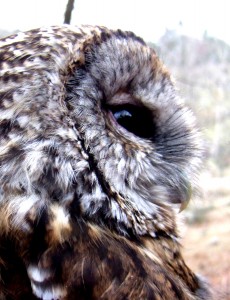 One of the richest areas for wildlife around Inverness is woodland, whether it be the ancient pine forests or, in contrast, birch/ rowan woodlands. However, for ourselves to see the wildlife is often very difficult, mainly because the woodland is so rich that it provides cover for birds and animals to hide. One of the ways we can overcome this disadvantage is similar to that explained for rivers in this column recently. Whilst you may see brief glimpses of wildlife as you walk through woodland, the best way is to just sit in one spot and let the birds and, to a certain extent, the animals accept and ignore you. Sit against a tree or a bank and, if you keep still, you can just be part of the scenery.
One of the richest areas for wildlife around Inverness is woodland, whether it be the ancient pine forests or, in contrast, birch/ rowan woodlands. However, for ourselves to see the wildlife is often very difficult, mainly because the woodland is so rich that it provides cover for birds and animals to hide. One of the ways we can overcome this disadvantage is similar to that explained for rivers in this column recently. Whilst you may see brief glimpses of wildlife as you walk through woodland, the best way is to just sit in one spot and let the birds and, to a certain extent, the animals accept and ignore you. Sit against a tree or a bank and, if you keep still, you can just be part of the scenery.
One of advantages is if you can have at least some idea what to expect and one way forward is to look for signs. Droppings of deer, there may be three different deer in the woodland, roe, sika or red deer. There may be fir cones gnawed by squirrels or, if you are lucky, crossbills. Most of the ground will not reveal any tracks but look for small areas of mud on banks or by gates or on the side of any burns. With practice you should be able to tell badger tracks from foxes and roe deer from red deer. There will almost certainly be a sparrowhawk living there so look for the tell tale signs of the remains of a bird with its breast feathers torn out and the meat devoured. The first sign may well be a pile of feathers seen from a distance where the bird of prey has plucked its victim first.
Fortunately, there are now a small number of books on the market to help with tracking and signs and the one I use was published, as a reprint, in 2011. It is “Animal Tracks and Signs” by Preben Bang and Preben Dahlstrom and published by Oxford University Press. This book covers tracks, droppings, nuts and cones attacked and even single feathers. The time of day is important and early morning is best, even preferably at first light. Some of the night-time animals such as badgers. foxes and pine martens may well be making their way home. Most birds will be leaving their night-time roosts and will be actively feeding and more likely to ignore you as food comes first.
Bird songs and calls are a good clue to what birds are around but many people find them difficult. Fortunately there are plenty of CDs on the market to assist you but try to find one that covers UK birds only as if you go for those that include Europe there will be a large number of birds you will not hear or very rarely. Concentrate on the UK ones first and even bird calls as remember most birds only sing during the breeding seasons. Bird calls are also important for clues to other wildlife. For example, if you suddenly hear blackbirds calling along with small birds such as great tits it could well be an intruder is around. It could be a stoat but in most cases it may well be a tawny owl that is sitting minding its own business and roosting away the day. The small birds suddenly realise it is there and start to mob it. In the end the small birds may well give up but if they persist then the owl my well move. The secret of sitting in woodland is to be prepared for the unexpected which is part of the fascination of watching wildlife.
Tags: highland wildlife
